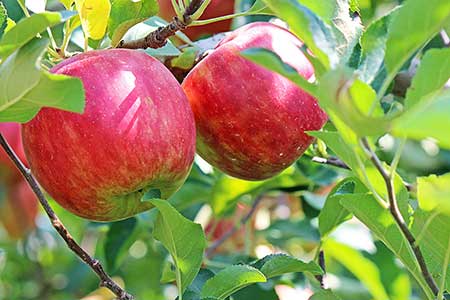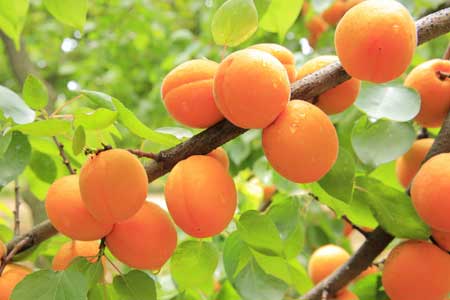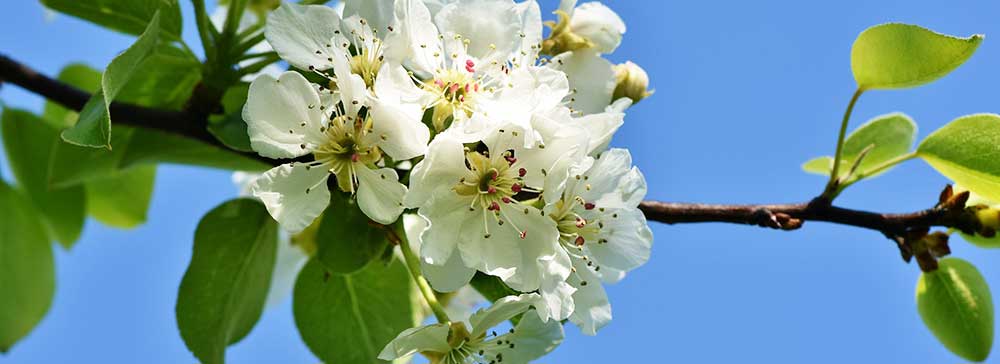Fruit Trees
How to grow
Once upon a time fruit trees could be found in every home garden, nowadays gardens tend to be smaller and it is difficult to find the space, but if you choose carefully they can fit.
Citrus varieties don’t require a lot of space, plus there are dwarf or non-spreading trees that are perfect for smaller spaces. Some can be espaliered on a fence and climbers are space savers.
At a Glance:
- Prefer a warm, sunny site
- Choose fruits and varieties that are best suited to your area
- Don’t forget to feed and water them
Some berry fruit, such as strawberries have always been popular but others, such as raspberries, boysenberries, blackberries, currants, and blueberries, have all become popular because of their vitamin rich and anti-oxidant content. In addition they are great tasting, and are relatively easy to grow.
Many deciduous fruit trees can often perform additional functions, such as providing shade in summer, blossom in spring and sometimes coloured leaves in autumn. Many can be grown in most areas, while a few have more particular requirements.
WHEN TO PLANT
While winter is the main planting season for fruit trees, they can be planted at other times of the year, provided they are watered regularly.
Sub-tropicals and citrus trees are normally available all year round, but their main season is spring which is an ideal time to plant.

WHERE TO PLANT
- Choose a warm, sunny position, sheltered from strong winds.
- Deciduous fruit trees will grow in most soils; however, in clay soils you should raise your plantings and add lots of compost.
- Many sub-tropical trees simply require a more free-draining soil and additional warmth.
MULCHING
This is a highly recommended practice as it suppresses weeds and conserves moisture in the soil. A layer of mulch, compost or similar medium laid on the surface in spring will help prevent moisture loss and greatly benefit the trees.
HOW TO PLANT
Before planting water the plant well. Dig in plenty of good compost, well-rotted animal manure or organic material to the planting hole.
For more information on how to plants trees read our Tree, Shrubs & Roses planting guide.

AFTER CARE...
Feeding
Fruit trees benefit from an annual dressing of lime or gypsum in August, followed by an application of Tui Citrus and Fruit Tree fertiliser.
Many fruit trees can withstand considerable dry periods, but watering will greatly improve the result.
Pests and Diseases
There are a number of pests and diseases that attack fruit trees. If particular pests and diseases are very prevalent in your area it may pay to choose different fruits that are not affected.
- Apples, pears and quinces are attacked by codling moth, aphids, black spot and powdery mildew.
- Stone fruits (peaches, plums, nectarines and apricots) are attacked by oriental fruit moth, aphids, leaf curl, brown rot, shot hole and rust.
- Many subtropical fruits are attacked by aphids, white fly and caterpillars.
For control of these pests and diseases, CLICK HERE.
Pollinators
Some fruit trees require another variety to be grown nearby to ensure pollination.
Kiwifruit require a male and female plant.
Ask a garden adviser if your selection requires a pollinator as this is very important.
Pruning is divided into two aspects:
- Pruning to shape in the young stages; and
- Pruning for continuous fruiting and maintaining shape of established trees.
Pruning to shape is dependent on the variety, and to some extent, the shape you want.
There are three basic shapes:
Vase shape - The traditional open centre with 3 to 4 main leaders for framework.
Central leader or pyramid - A more modern method as it takes less space and trees can be kept narrow. Ballerina apples are very suited to this method.
Espalier - An ideal method of training and pruning where space is limited.
Once you have decided on which shape you want then you prune your tree to achieve that. Always remember that the strongest new growth will come from the first bud below where the pruning cut is made.
- Pruning for continuous fruiting is important once the tree has established. This is relatively easy once you know where the fruit will form:
- Apples, pears, quinces and plums fruit on spurs for several years. New spurs form as old ones die.
- Peaches and nectarines fruit on one-year-old wood i.e. the wood grown last year will carry fruit this year, so when pruning do not cut this wood out but shorten it only, or remove only some of it.
- Grapes, passion fruit, kiwifruit and tamarillo fruit on the current season’s new growth so they can be cut back harder without fear. Kiwifruit is the exception though as while this does fruit on new growth it does so on one-year-old wood only.
For more detailed information read our How to Prune Fruit Trees article.

14537